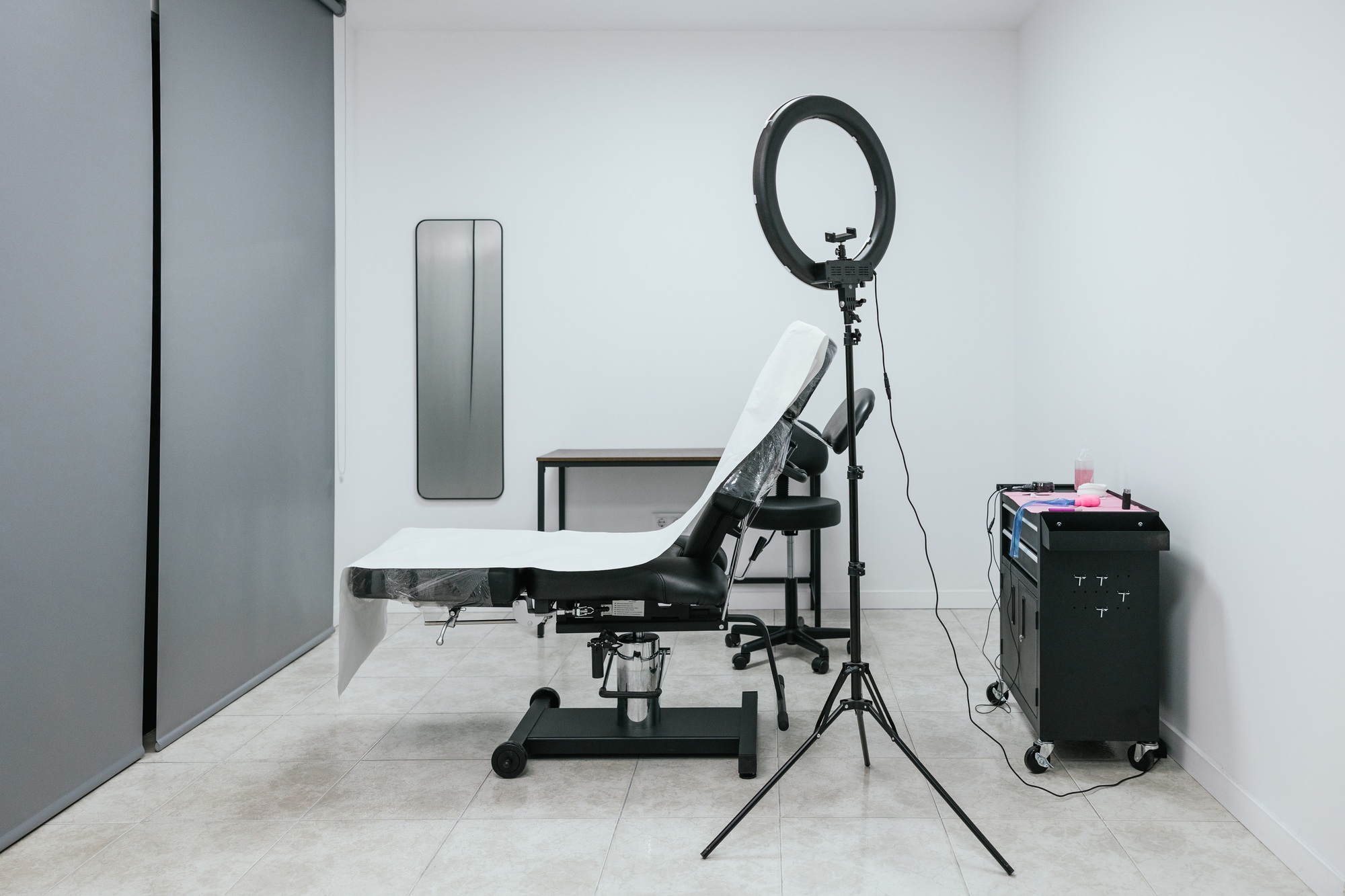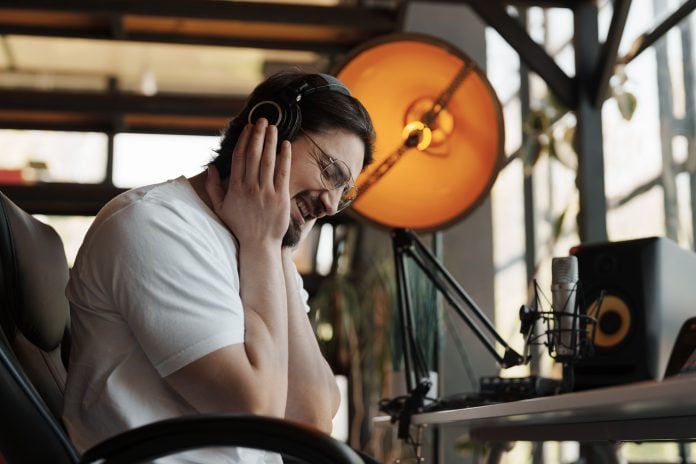Key Takeaways

- Cost-Effective Setup: Establishing a home studio saves money on rental fees and eliminates travel expenses while allowing for potential tax deductions.
- Enhanced Convenience: The ability to work from home provides flexibility, enabling creativity to flourish whenever inspiration strikes without the constraints of scheduled studio time.
- Essential Equipment: Key components such as a powerful computer, quality audio interface, microphones, and DAWs are crucial for achieving professional-grade production.
- Customizable Design: Personalizing your home studio not only reflects your brand but also optimizes functionality, boosting both productivity and inspiration.
- Room Acoustics Matter: Selecting a suitable room and applying acoustic treatment through bass traps, panels, and diffusers can significantly improve sound quality for recordings.
- Efficient Workflow: Organizing your studio layout for easy access to equipment minimizes distractions and promotes a more streamlined production process.
Creating a home studio is more than just a trend; it’s a game changer for artists, musicians, and content creators. Imagine having a dedicated space that fuels your creativity and allows you to produce high-quality work right at home. Whether you’re recording music, filming videos, or crafting podcasts, a well-designed studio can elevate your projects to new heights.
With the rise of remote work and online content consumption, setting up a home studio has never been more accessible. You don’t need a huge budget or a vast space to get started. All you need is a vision and the right tools to transform a corner of your home into a creative haven. Dive in and discover how you can turn your passion into polished productions without leaving your comfort zone.
Overview of Home Studios

Creating a home studio offers significant advantages for small business owners, particularly in tech-driven fields like content creation and music production. A home studio allows you to produce high-quality work without the overhead of renting commercial space. You can leverage technology to enhance your creativity and efficiency while maintaining control over your creative process.
Home studios require minimal investment. You can set up a productive workspace with essential equipment such as a computer, microphones, audio interfaces, and software tools. These items are widely available and often come at various price points.
Customization is another key benefit. You can design your home studio to reflect your brand and optimize functionality. Whether you choose a corner of your living room or a dedicated spare room, personalizing your workspace fosters inspiration and productivity.
Embracing remote work never has to sacrifice quality. With the right tech tools, you can achieve professional-grade results from the comfort of your home. As you enhance your offerings, a home studio can become an integral part of your small business strategy.
Benefits of Having a Home Studio

A home studio offers numerous advantages, especially for small businesses in tech-driven fields. These benefits center around cost-effectiveness and convenience, significantly enhancing your productivity and creativity.
Cost-Effectiveness
Setting up a home studio proves to be cost-effective for your small business. Initial investments in essential equipment and room treatment yield long-term savings on rental fees associated with professional studios. You eliminate travel expenses and can often deduct a portion of home costs from taxes if the space is used for business purposes. By investing smartly in technology, you control your production quality without breaking the bank.
Convenience and Accessibility
Convenience and accessibility stand as critical advantages of a home studio. You work from the comfort of your home, removing the need to commute to commercial spaces. This flexibility allows you to capture creative ideas whenever inspiration strikes, whether early in the morning or late at night. You can streamline your workflow without the logistical issues of scheduling studio time, making it easier to maintain momentum in your projects.
Essential Equipment for Home Studios

Creating a functional home studio requires specific equipment to ensure high-quality production. Focus on these essential components to optimize your creative workspace.
Computer
- Your computer serves as the central hub for your home studio. It should offer sufficient processing power and storage to run digital audio software effectively. Aim for a minimum of 1 terabyte of storage and 8 gigabytes of RAM for smooth operation.
Audio Interface
- The audio interface connects your microphones, instruments, and speakers to your computer. It converts analog audio signals into digital signals, crucial for recording and mixing. Look for models featuring transparent preamps, low noise floors, and multiple input channels. Popular options include the Native Instruments KOMPLETE AUDIO 6, Steinberg UR24C, and Behringer UMC series.
Microphones
- Quality microphones capture sound accurately, enhancing your recordings’ clarity. Consider dynamic microphones for vocals and instruments or condenser microphones for versatility. Ensure your choice suits your recording needs, whether for podcasts, music, or voiceovers, as high-quality sound contributes significantly to your production’s professionalism.
Software and DAWs
- Digital Audio Workstations (DAWs) provide the software backbone for your home studio. Select a DAW that fits your tech preferences and production style. Popular options include Ableton Live, Logic Pro X, and Pro Tools. Invest in plugins and virtual instruments to expand your capabilities and streamline your workflow, making it easier to produce polished work suitable for your small business.
Designing Your Home Studio

Designing your home studio requires careful consideration of room acoustics, layout, and workflow. A well-planned space enhances creativity and ensures high-quality output for your small business in the tech-driven world.
Room Acoustics
Improving room acoustics significantly affects sound quality. Select a room that’s quiet, away from external noise. Avoid spaces near busy streets or loud household areas. A larger room with irregular shapes reduces sound reflections and standing waves, contributing to better audio quality. Aim for a room that’s not a perfect cube to avoid amplifying resonating frequencies.
Implement acoustic treatment using:
- Bass Traps: Place these in corners to absorb low-frequency sounds, minimizing distortion.
- Acoustic Panels: Install panels on walls for absorbing mid to high frequencies, creating a balanced sound.
- Diffusers: Use diffusers to scatter sound waves, decreasing echoes and reflections.
Layout and Workflow
Optimizing layout and workflow is essential for efficiency. Arrange your studio with easy access to your equipment, minimizing movement and distractions. Keep essential tools like your computer, audio interface, and microphones within arm’s reach.
Utilize a triangular setup with your computer at the center, your keyboard or audio mixer on one side, and microphone placement on the other. This configuration promotes a streamlined workflow, allowing you to switch between tasks without losing focus. Ensure your workstation reflects your brand, integrating personalized elements that inspire creativity.
Incorporate technology, ensuring your computer has adequate specs, such as at least 1 terabyte of storage and 8 gigabytes of RAM. This setup supports seamless production, crucial for small business success. Following these guidelines creates an efficient, aesthetically pleasing recording environment tailored to your needs.
Conclusion

Creating a home studio is an empowering step for anyone looking to elevate their creative endeavors. It provides you with a dedicated space to explore your passions without the constraints of traditional studio environments. With the right equipment and thoughtful design, you can produce high-quality work that reflects your unique voice.
Embracing this setup not only saves you money but also enhances efficiency and convenience. You can capture inspiration whenever it strikes and maintain control over your creative process. As you embark on this journey, remember that your home studio is a reflection of you, tailored to support your artistic vision and professional growth. Transform your space and watch your creativity flourish.
Frequently Asked Questions

What are the benefits of having a home studio?
Creating a home studio enhances creativity and work quality for artists, musicians, and content creators. It allows for professional-quality production without the high costs of commercial spaces, enabling creators to work efficiently from home and capture inspiration whenever it strikes.
Do I need a large budget to set up a home studio?
No, you don’t need a large budget. Essential equipment like computers, microphones, and software tools are available at various price points, making it accessible for individuals to start a home studio without significant financial investment.
What equipment is essential for a home studio?
Key equipment includes a powerful computer with at least 1TB of storage, an audio interface with multiple input channels, and quality microphones (dynamic or condenser). A Digital Audio Workstation (DAW) is also crucial for production, along with plugins and virtual instruments for enhanced capabilities.
How can a home studio save money?
Investing in a home studio can lead to long-term savings by eliminating rental fees and travel costs associated with commercial spaces. Additionally, creators may qualify for tax deductions by using their home space for business purposes.
What are the best practices for designing a home studio?
Select a quiet room with irregular shapes for better sound quality and use acoustic treatments like panels and bass traps. Arrange your layout efficiently, ideally in a triangular setup to keep important equipment within easy reach, boosting your workflow.
How does a home studio enhance workflow?
A home studio streamlines workflow by allowing artists to work in a space that reflects their brand and style. This convenience means creators can instantly capture ideas and maintain project momentum without the distractions found in public spaces.
Image Via Envato



